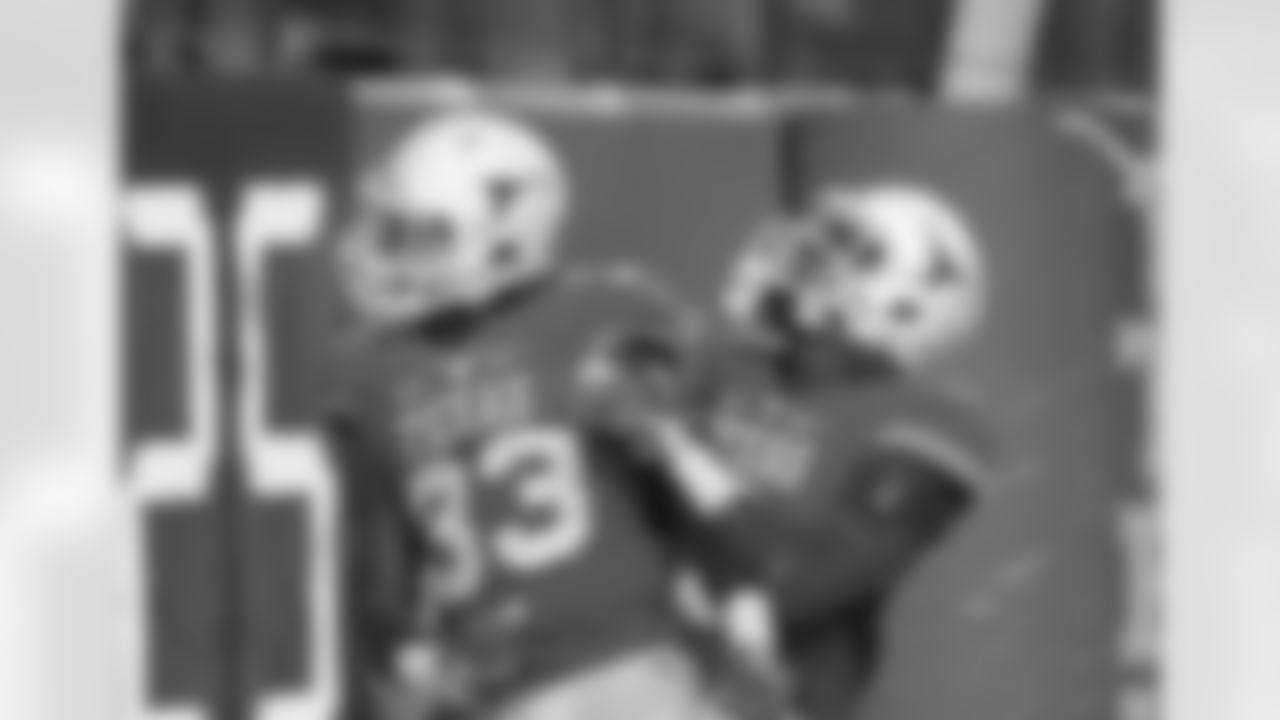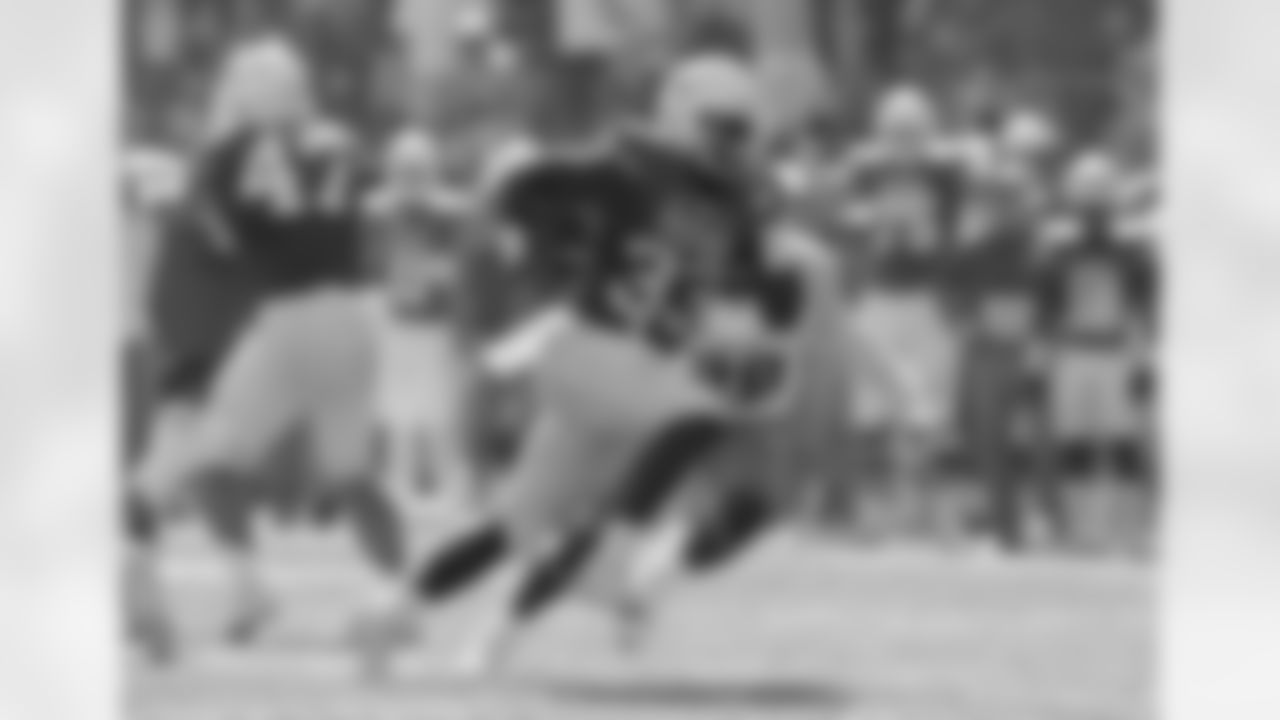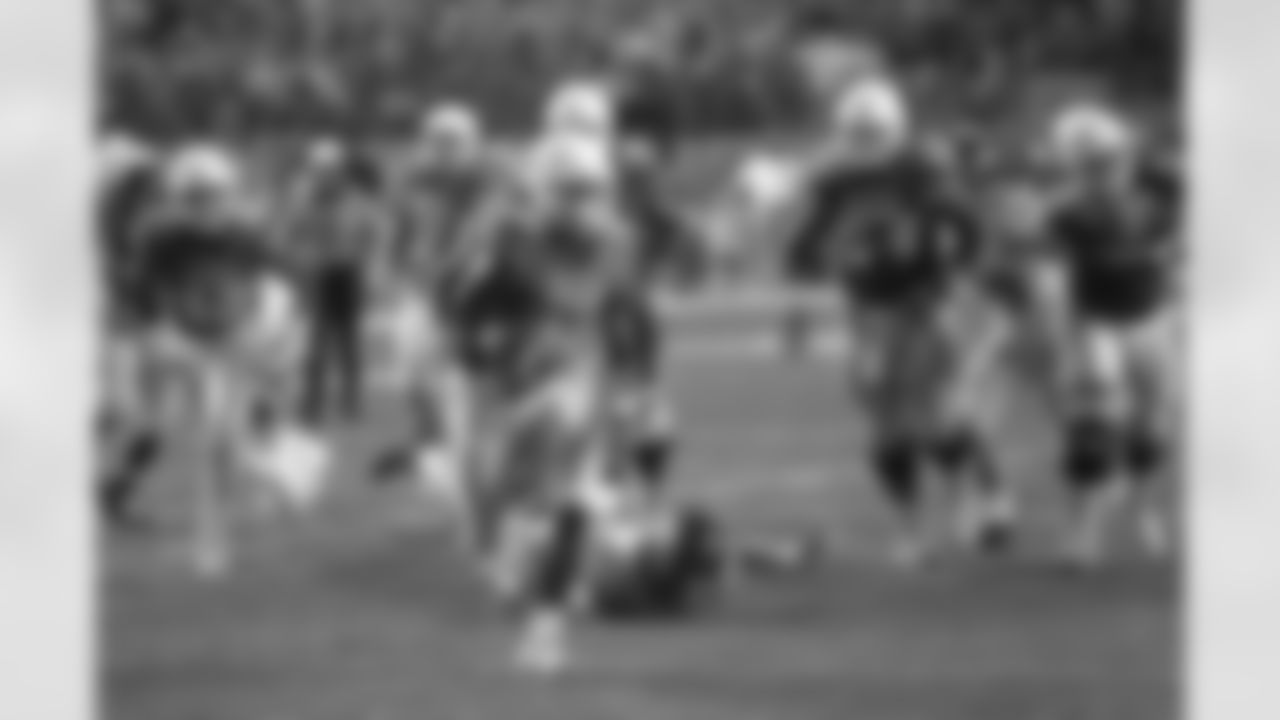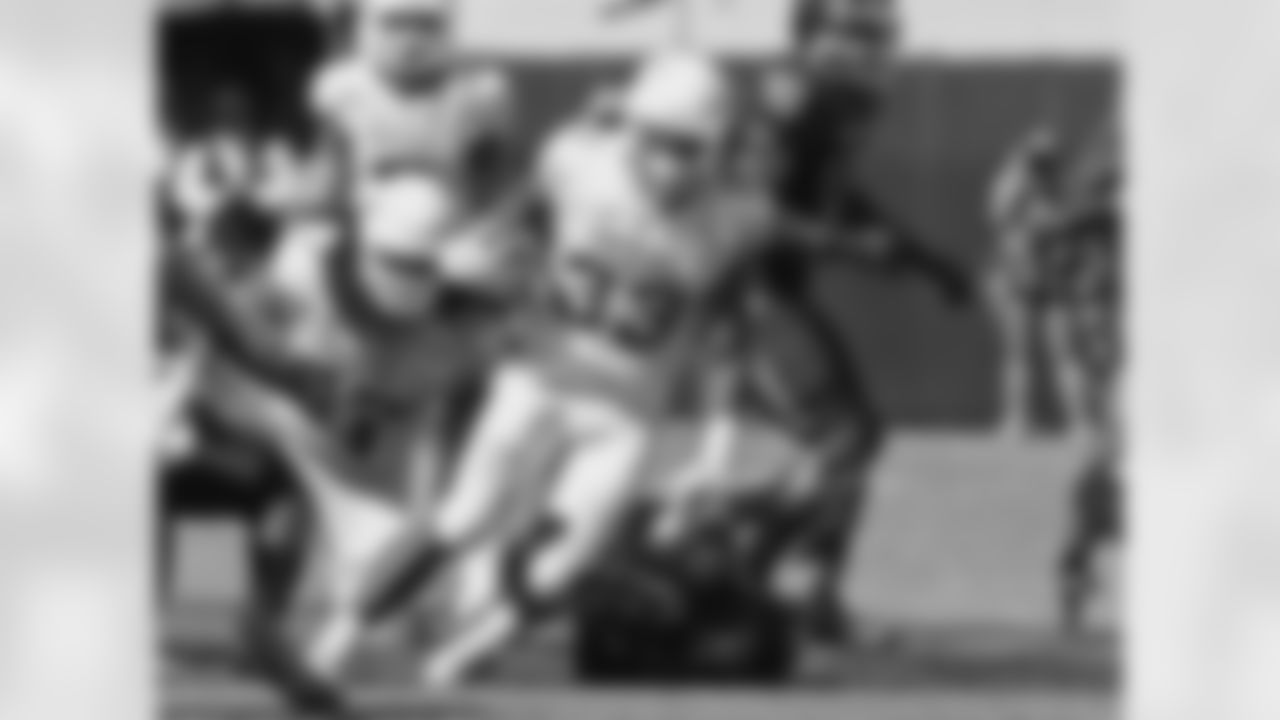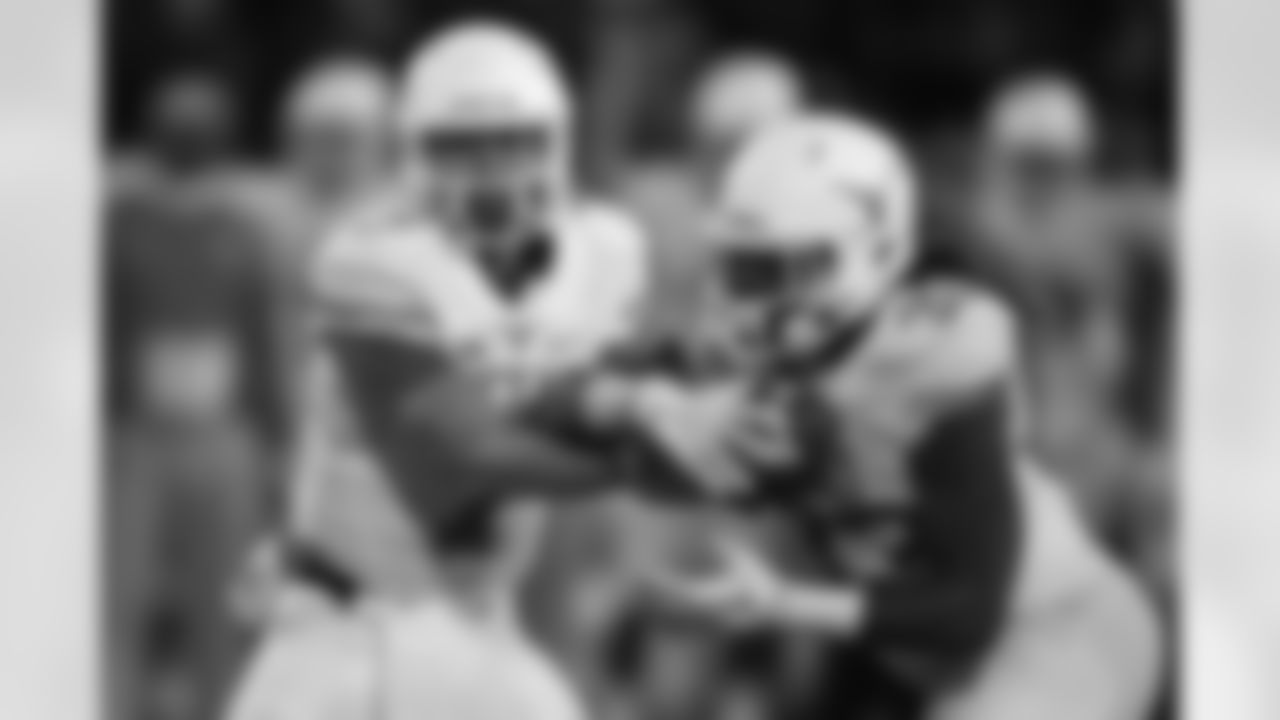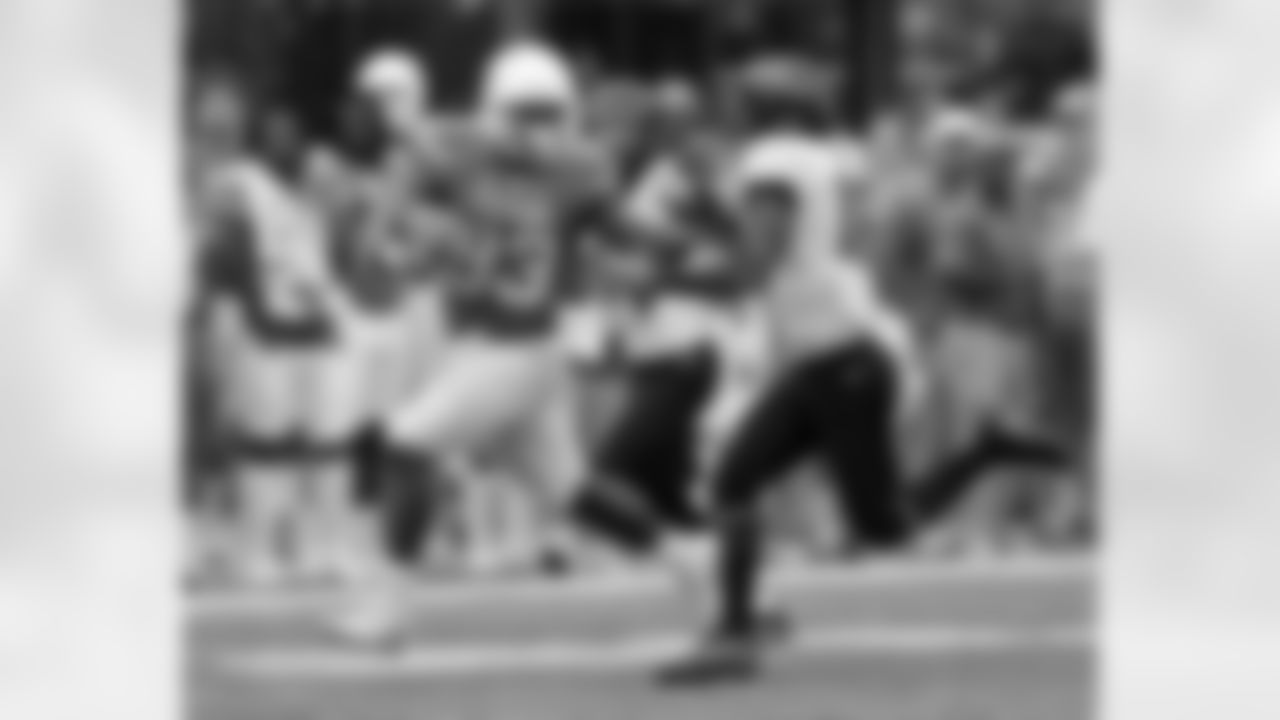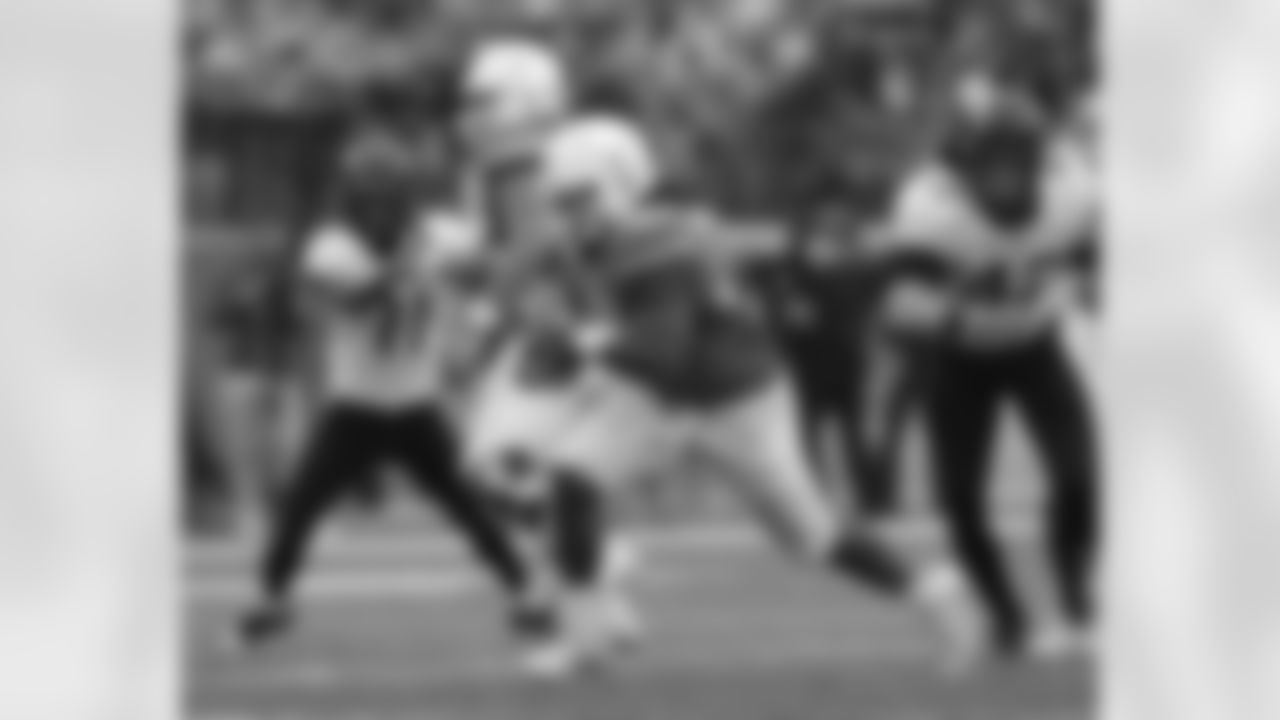When D'Onta Foreman's name was called on Friday night of draft weekend, I couldn't help but think of the first Raiders game of 2016.
In the second half, in particular, the Texans shoved the ball down Oakland's throat as the Raiders defense wilted in the altitude of Mexico City. After tying the game at 20, the Raiders couldn't stop Akeem Hunt on the kickoff return, which gave the Texans excellent field position.
A few plays later, the Texans faced a key 3rd-and-2 as the clock wound down in the fourth. Although it appeared Lamar Miller did get the first down, he was marked short. Then, on 4th-and-short, Hunt was marked shy of the yard to gain. A few minutes later, Raiders quarterback Derek Carr hit Amari Cooper for the game-winning touchdown.
We were spoiled in Houston for years on short-yardage situations with former star running back Arian Foster, who was one of the best I ever saw at knowing the yard to gain and how he could get to that spot. He wasn't going to run everyone over to get the yardage needed, but could bury a defender in his tracks if necessary.
That's Foreman. At 235 lb., he's thick and strong enough to run through feeble arm tackles but he can make defenders miss anywhere on the field. Do not let him get a clean run through the first two levels because defensive backs will be in major trouble.
But, it's foolhardy to proclaim Foreman as JUST a short-yardage back, although he has the build and mindset of one. He had 49 runs of 10 yards or more and 16 runs of 20 yards or more in 2016. Most importantly, 98 of his 323 carries went for first downs, a staggering 30.3 percent - first in the nation. And, he got stronger as the game wore one as he had 27 runs of 10 yards or more and nine runs of 20 or more in the second halves of games (22 and 7, respectively, in the first half).
As it pertains to short yardage though, on 3rd-and-3 or less, Foreman had 31 carries and picked up first downs 20 times, 64.5 percent of the time; that mark was tied for third in the nation in 2016.
That all said, NFL teams don't draft a first down short yardage specialist in the third round. Foreman presents problems for defenses with his downhill running style.
I found a run that perfectly describes his running style and encapsulates what he can do for this Texans offense. It was against Baylor in Texas' win over the bowl-bound Bears and, yes, it was on 3rd-and-short. The down and distance, though, was somewhat immaterial as I honestly didn't even realize that it was 3rd-and-short on this run until a third viewing.
Regardless, the Longhorns trailed Baylor in the first quarter and faced that 3rd-and-1. They had 21 personnel on the field with a fullback in a sniffer position on the right side and quarterback Shane Buechele in the pistol. Foreman was aligned directly behind Buechele.

The Longhorns ran one of their favorite plays - split zone. The offensive line blocked inside zone to the right and Buechele opened to his right to give the ball to Foreman. The fullback Andrew Beck then split the zone, kicking out the edge player to the opposite side.

The thought with split zone is that if the defense collapses hard from the backside, the fullback's kick/split block opens a hole back across the formation. As such, Foreman had two tracks to follow - stay with his line to the right or follow Beck to the left.
Baylor, though, did an excellent job on the front side of the play (the right side).

On the backside, linebacker Taylor Young wrong armed the block of Beck. That means instead of taking on Beck square, he took his outside arm and ripped inside Beck. Young's hope was that he could force Beck to have to bubble, thereby forcing Foreman to have to hesitate or bounce the run to the outside. If he did that, Baylor's team speed could track him down and make a tackle short of the first down.

Beck did the right thing, adjusting on the fly, and carrying Young all the way down the line of scrimmage. It was at this point that I realized Foreman was a different kind of 235 lb. tailback. In situations like this, most running backs would run right into that two-man mosh pit and then bounce or look for another hole that might have not been there. Too late.
What did Foreman do?
He just took a subtle side step, not even a jump cut, but a little shimmy to the left without slowing down one bit.
At this point, the eighth man in the box safety Orion Stewart was the only poor Baylor defender in the way.

As Foreman stuck his foot back in the ground, he burst forward nearly immediately and clearly picked up the first down. Shortly thereafter, though, Stewart made contact with Foreman. He hit Foreman at the 49-yard line.

Where did that get Stewart?

Foreman eventually ended the journey at the 40-yard line, nine yards later. He ran through Stewart as if he didn't even exist, kept his legs churning and only came to a rest when the backside safety cut his legs out. The Longhorns scored a few plays later to tie the game at seven.
After getting the ball back after a turnover, the Longhorns called the exact same play on 1st-and-10. This time, Young did not wrong arm yet Stewart expected to meet him on the outside. Only Foreman read the blocking up front and saw a hole emerge in the middle of the defense. He burst through untouched for a 37-yard touchdown. And, by run, I mean, a 235 lb. tailback sprinting away from Baylor's secondary players.
Power. Quick feet. Vision. Determination. Speed. Foreman displayed all those traits throughout his junior year at Texas, encapsulated in this successful run against Baylor.
Check out some of the best shots of RB D'Onta Foreman from his time at Texas.
